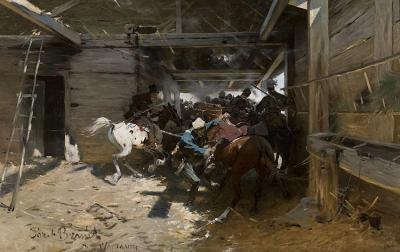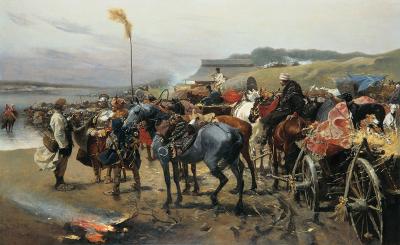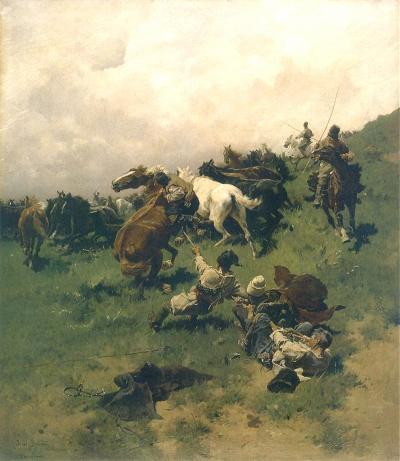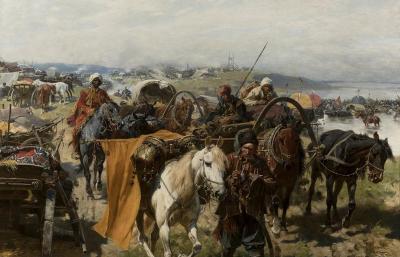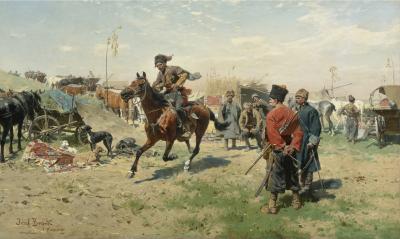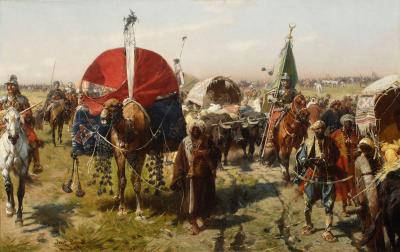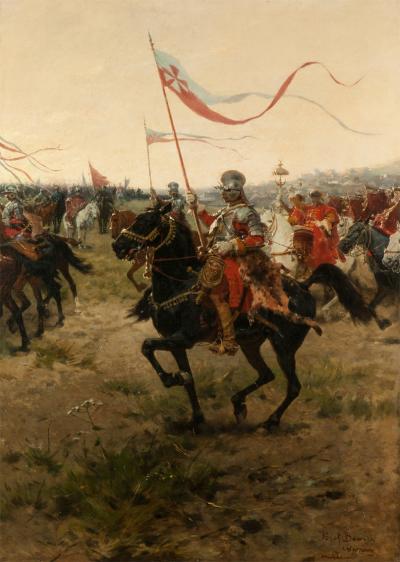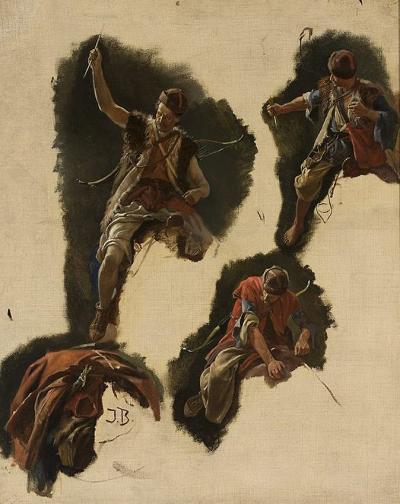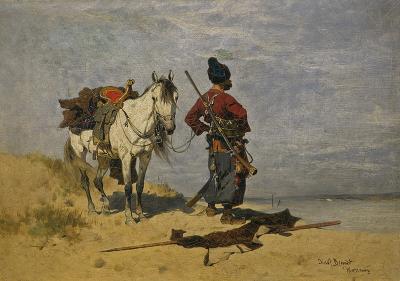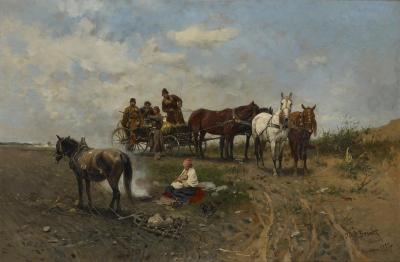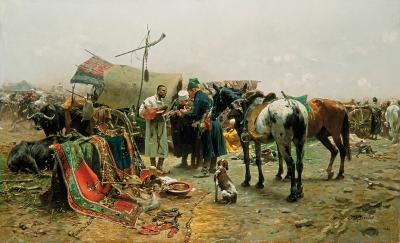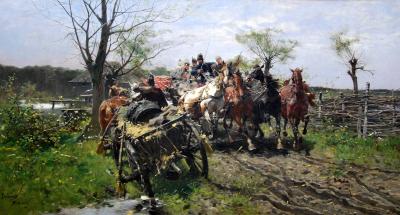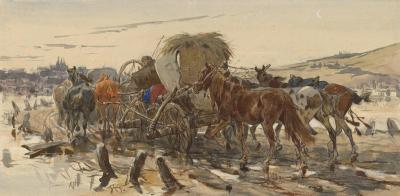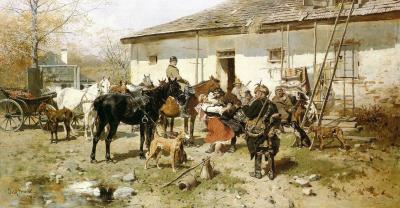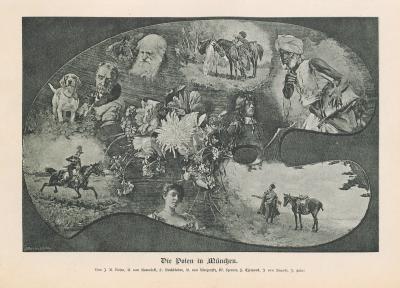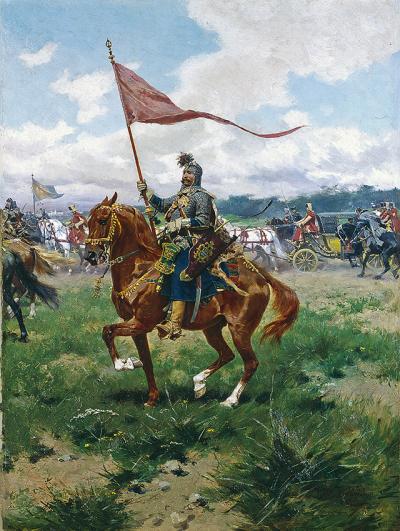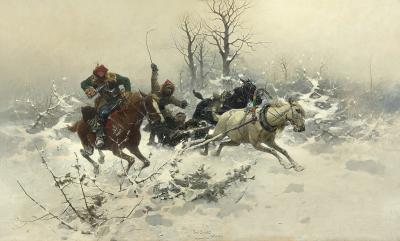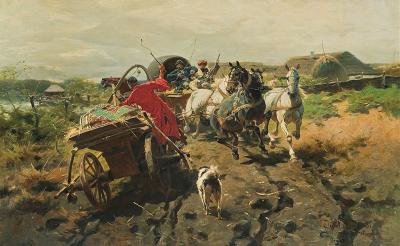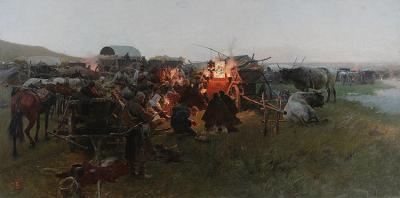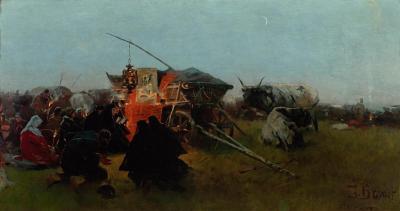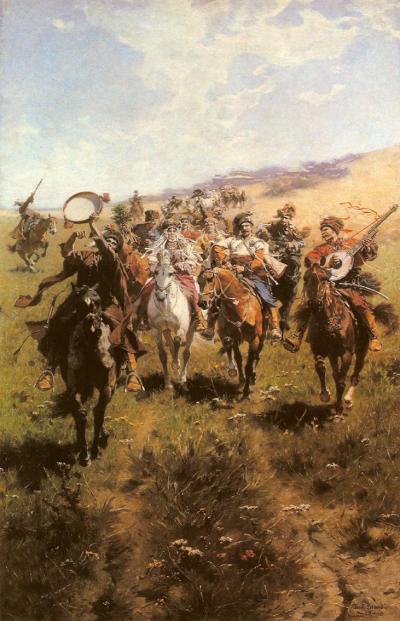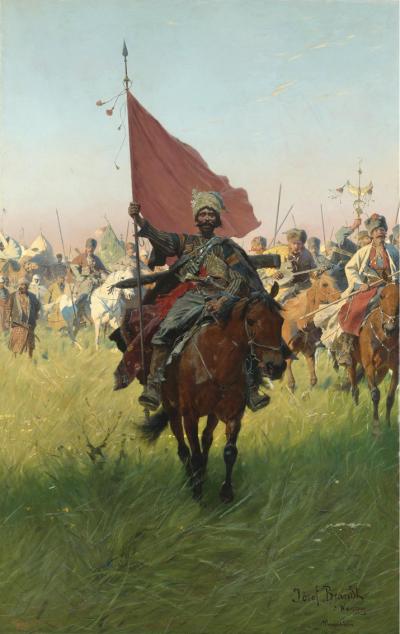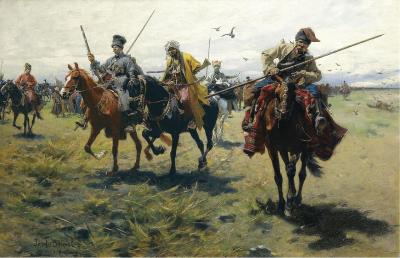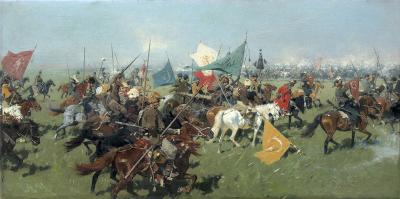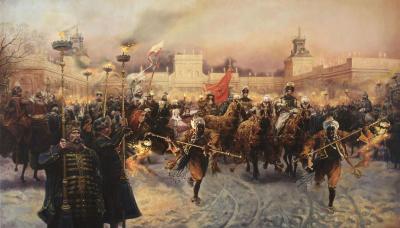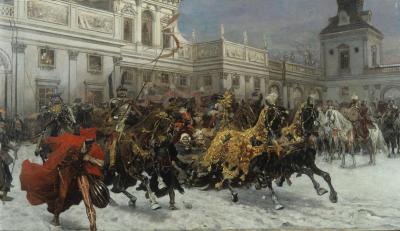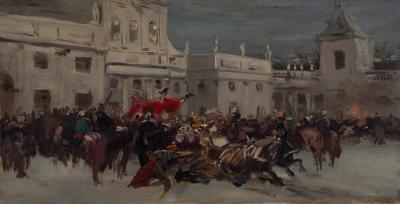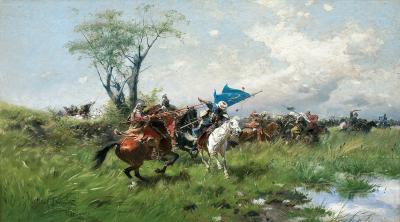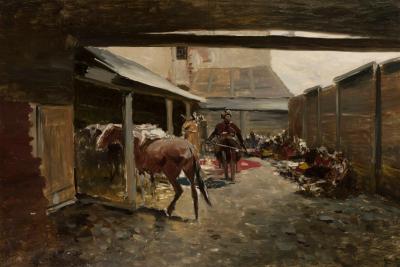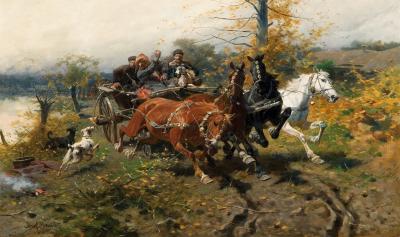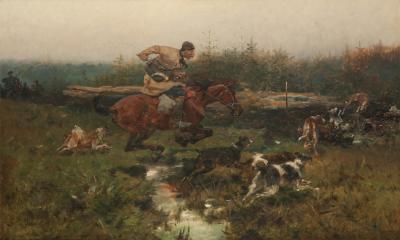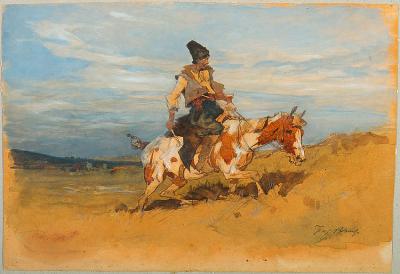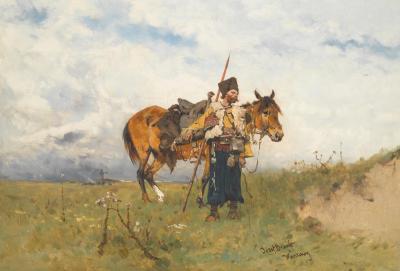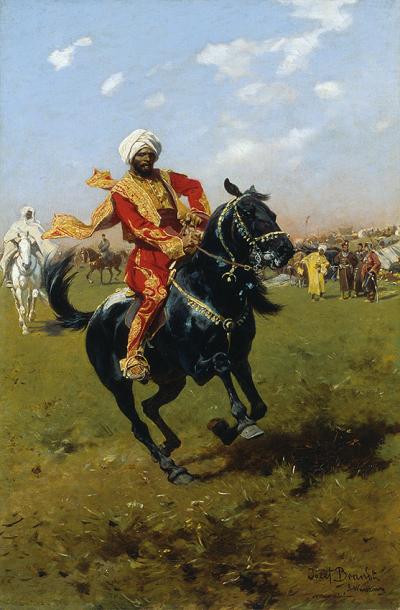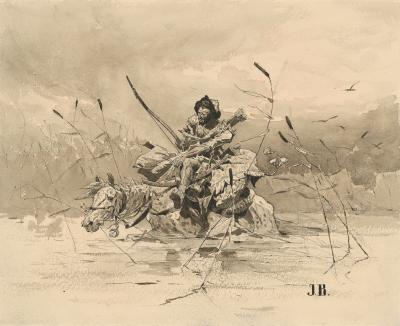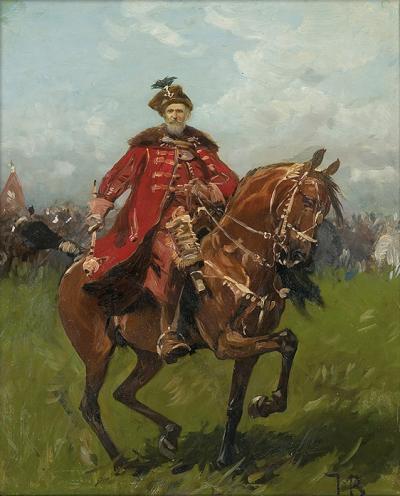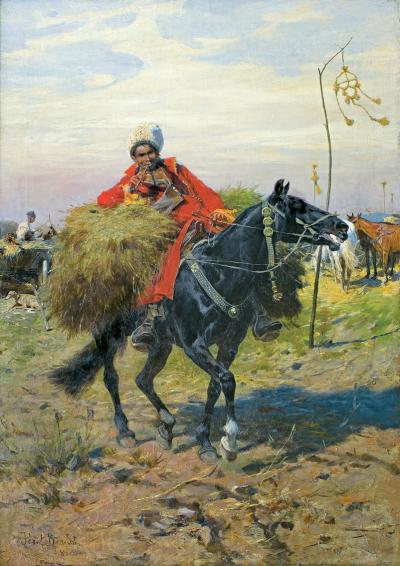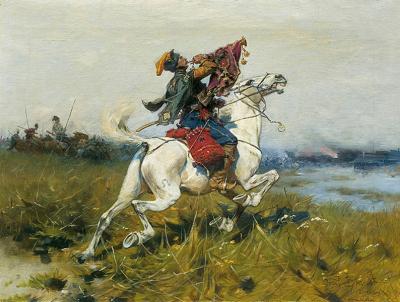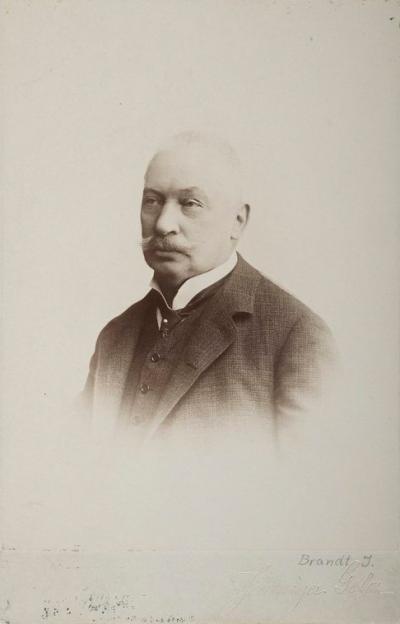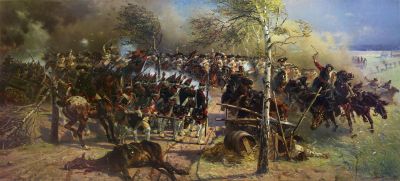Józef Brandt
Mediathek Sorted

The painting entitled the "Liberation of Prisoners" (1878, fig. 25), depicts an event dating back to the time of the invasion of the Crimean Tatars in Poland-Lithuania in the spring of 1624. This was the battle of Martynów, during which General Stanisław Koniecpolski (1590/94-1646) liberated Polish prisoners of war from the threat of slavery by the Tatars in the Ottoman Empire. Brandt's painting places the battle at the centre of the painting and gives it a further accent with the addition of gun smoke. This time, however, he is also interested in the many motifs in the foreground. They show Tatars in oriental dress fleeing from the picture, with their primitive wagons and tents to the right of them. This time not only horses but also packed camels are standing nearby. The painting "Market in Balta" - it is also three metres wide and is only known from photographs - shows a scene from the Ukrainian town founded in the 16th century by Tatars and inhabited by numerous ethnic groups, in a similar, but mirror-inverted, composition. The main motifs on the bare earth in front of a landscape of mills emerging from the morning mist, are busy figures, riders, resting horses and tents covered with colourful carpets; this time on the left edge of the picture.
Motifs such as these tempt us to move Brandt nearer to the Orientalists, i. e. Orient painters in France since Eugene Delacroix (1798-1863), in particular Jean-Léon Gérôme (1824-1904); and in Germany, artists like Adolf Schreyer (1828-1899) and Gustav Bauernfeind (1848-1904). Contemporary collectors in Germany, England and the USA valued Brandt's oriental-influenced scenes for their "exoticism”[46] For Brandt and numerous other Polish painters who dealt with the theme of battle and equestrian scenes from the Polish history of the 17th century and the battles of the Poles with Tatars, Turks and the Cossacks, these motifs are a contribution to works of art intended to give the Polish people a sense of identity and pride in their nation. The recollection of the former Polish Aristocratic Republic, which existed between 1569 and 1795 and whose territorial dominion extended to the multi-ethnic border areas with the Ottoman Empire, was intended to point to the goal of establishing a new Polish nation-state during the period of the partitions of Poland.[47]
It is the monumental paintings that justify Brandt's reputation. During the Vienna World Exhibition in 1873 he was awarded an art medal for his "Battle of Vienna". The city of Vienna purchased the painting and presented it to Archduchess Gisela, the daughter of Emperor Franz Joseph I.[48] In 1875, the Berlin National Gallery acquired a small-format oil painting with the title "Podolian Village", "to order", i. e. this was possibly a commissioned work, along with a painting entitled "Tartar Struggle", which, according to its description and size, must be the "Liberation of the Prisoners" (fig. 25).[49] In 1877 Brandt was elected a member of the Prussian Academy of Arts in Berlin,[50] and in 1878, as already mentioned, he was made an honorary Professor at the Munich Academy of Fine Arts. The small and medium-format paintings that he created in the years between the monumental paintings enabled wealthy buyers to purchase motifs from the major themes of the celebrated painter, which had become well-known to the general public, and display them in their homes.
[46] Ewa Micke-Broniarek: Alfred Wierusz-Kowalski (2004, Polish), at culture.pl, online: http://culture.pl/pl/tworca/alfred-wierusz-kowalski (called up on 26.11.2017). Anna Baumgartner was fascinated by the category of the exotic but she did not deal with “Orient” painters: Thoughts on the exotic in painting around Józef Brandt/“Egzotyka“ a malarstwo Józefa Brandta i jego kręgu – próba definicji pojęcia, can be found in Suwałki exhibition catalogue 2015 (see further reading), page 33-35
[47] Anna Baumgartner: Über die Bildwelten Józef Brandts/Świat obrazów Józefa Brandta, ibid, page 52, and further: “ Even today their visualisations of Polish history, which may have close links to Polish Romanitc poetry, have a powerful effect in Poland and are part of the nation's collective memory.”
[48] Catalogue of the National Gallery Berlin 1883 (see note 37), page 24
[49] Ibid, page 19, 172 f.
[50] Academy of Arts, fine arts, member, Joseph von Brandt, online: https://www.adk.de/de/akademie/mitglieder/index.htm?we_objectID=53863 (called up on 20.11.2017). To date it is not known when and how the paintings in Vienna and Berlin were sold on and arrived in the Warsaw museums.

















































































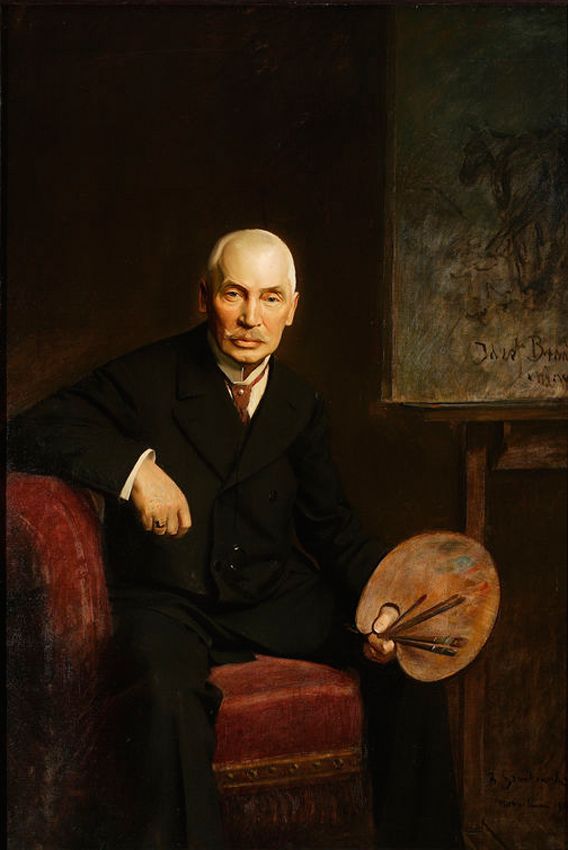
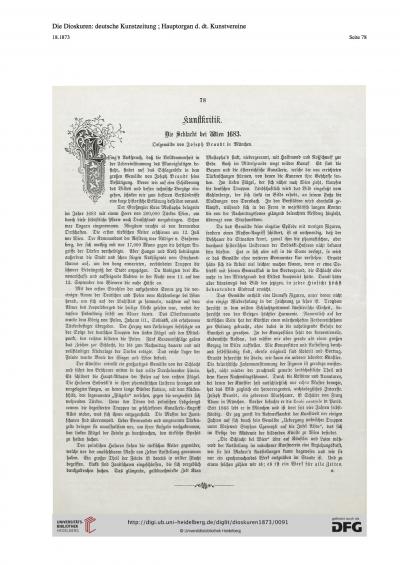
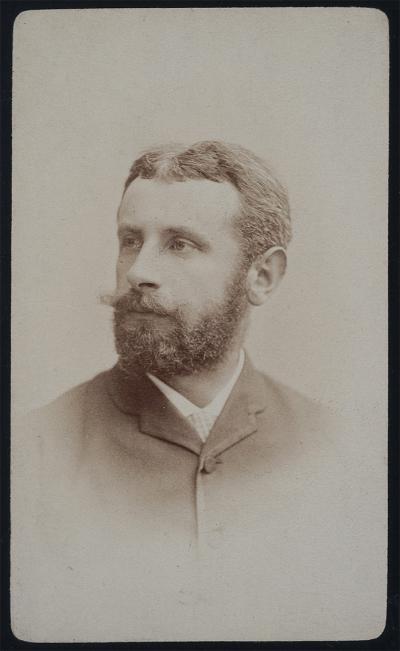
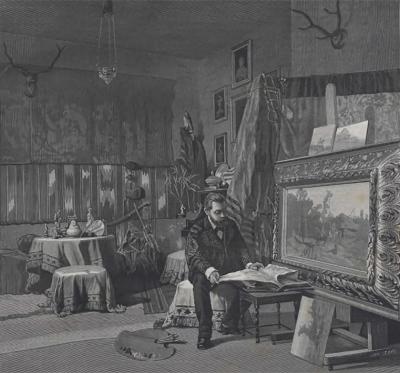
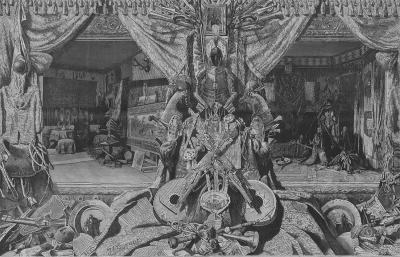
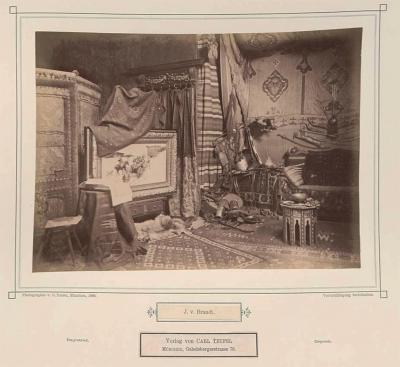
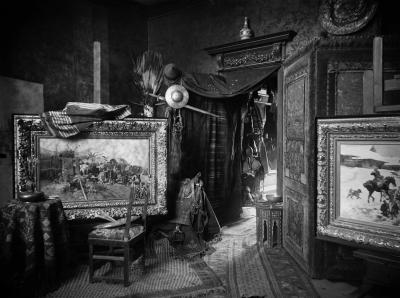
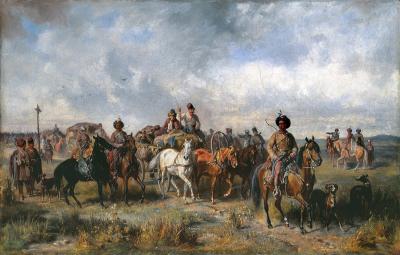
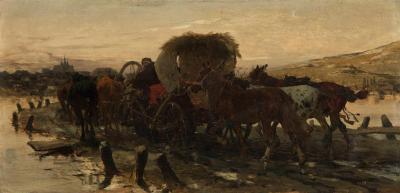
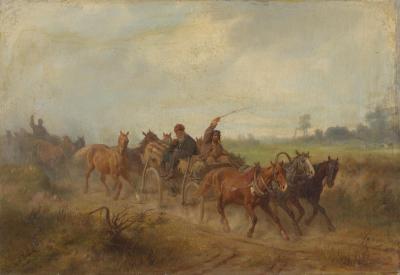
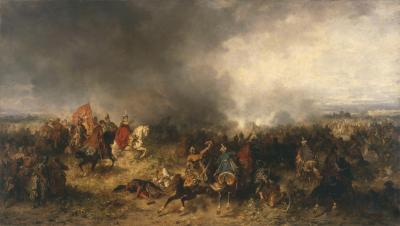
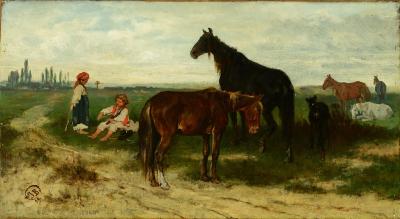
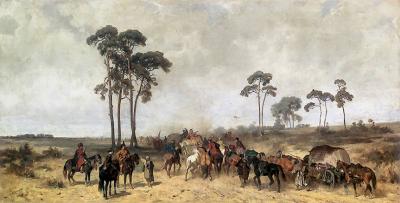
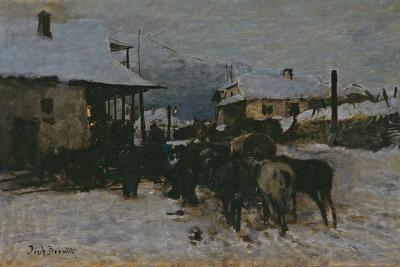
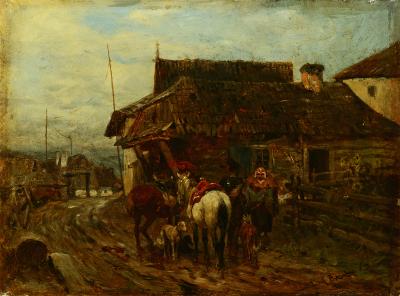
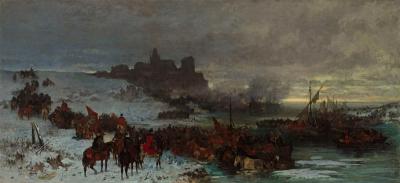
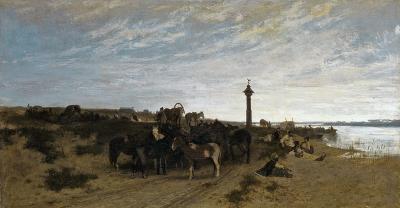
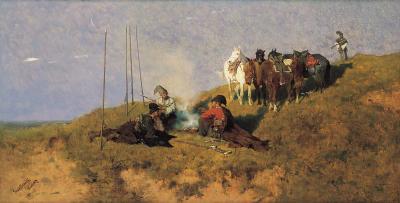
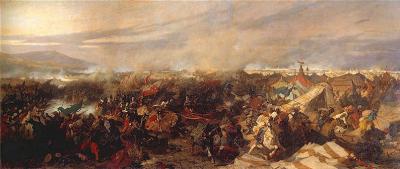
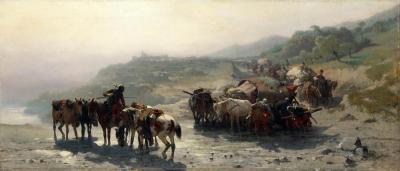
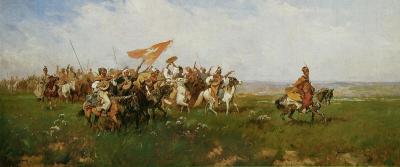
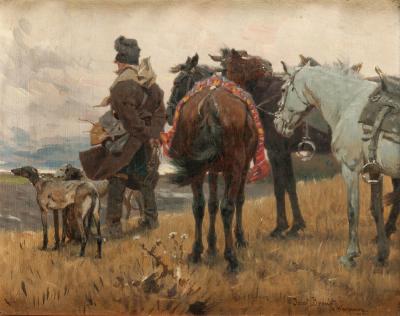
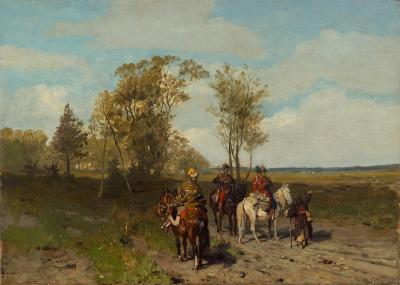
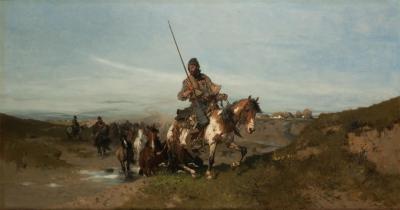
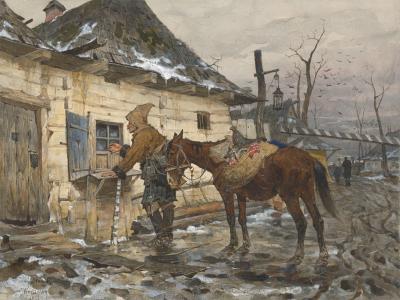
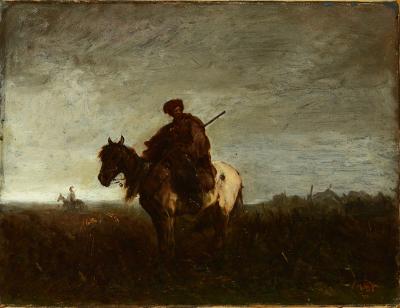
![Fig. 25: The Liberation of Prisoners, 1878 Fig. 25: The Liberation of Prisoners, 1878 - The Liberation of Prisoners [from the hands of Tatars], 1878. Oil on canvas, 179 x 445 cm, National Museum Warsaw/Muzeum Narodowe w Warszawie](/sites/default/files/styles/width_100_tiles/public/assets/images/25_befreiung_der_gefangenen_1878_mnw_cyf.jpg?itok=i5_t7XqM)
